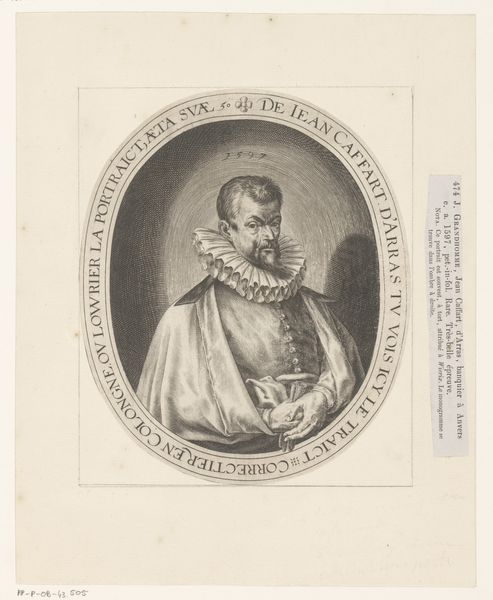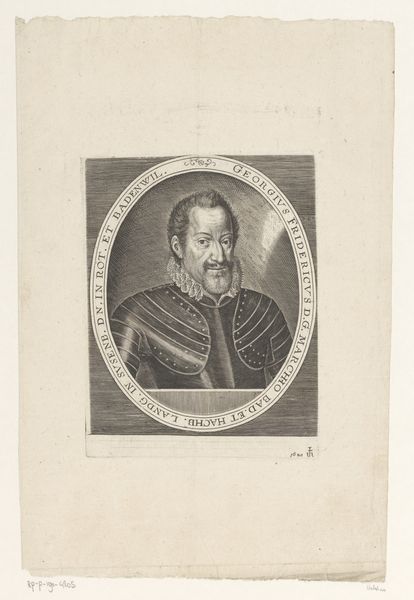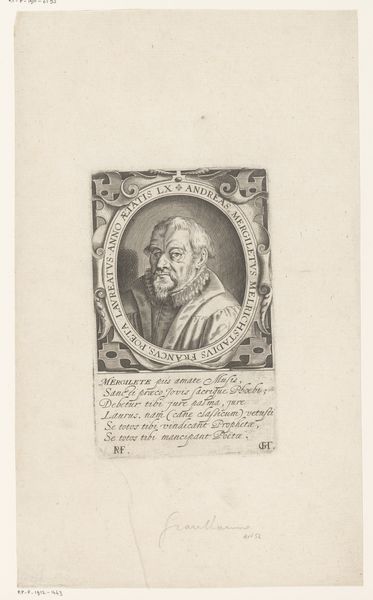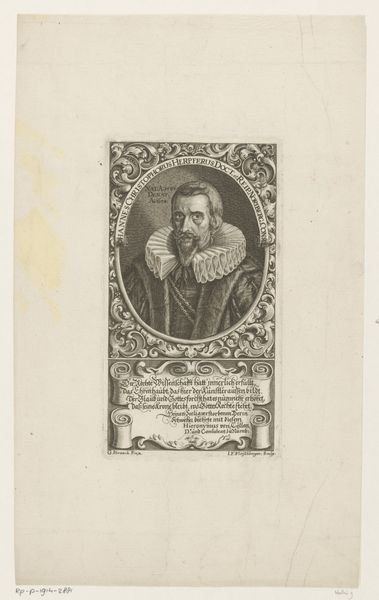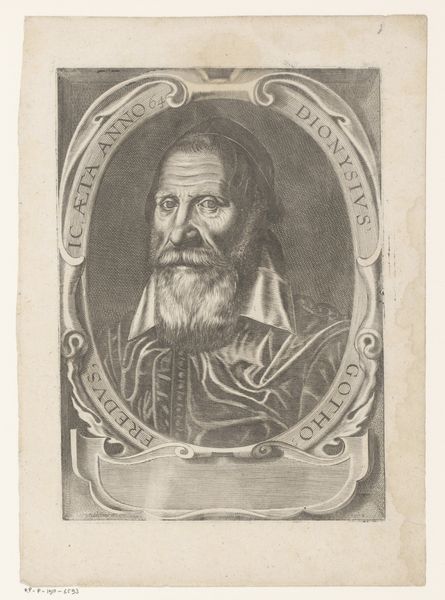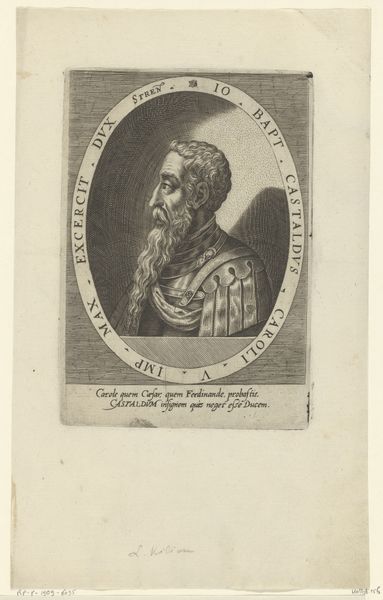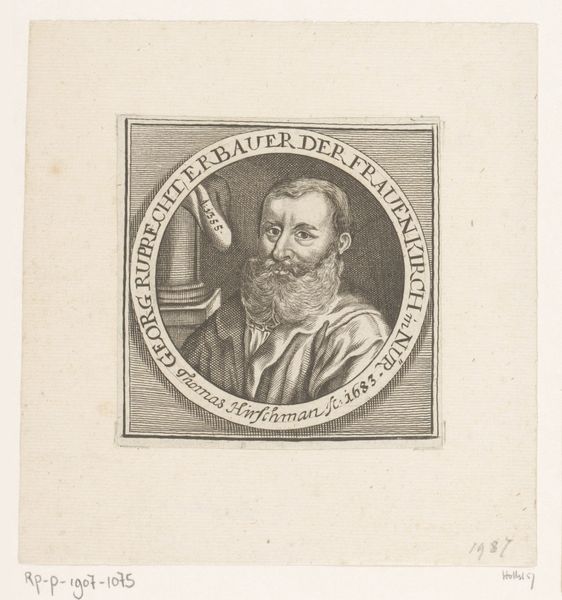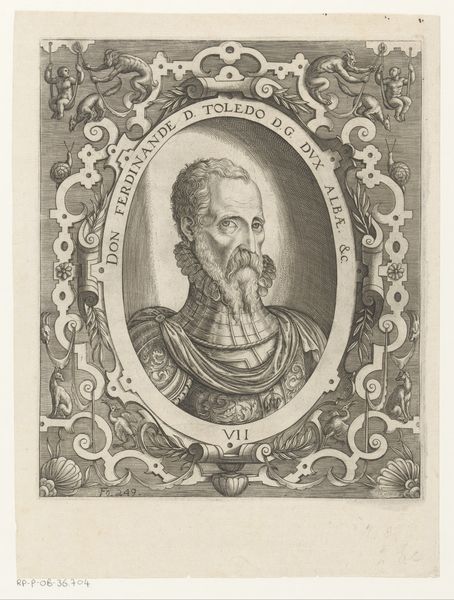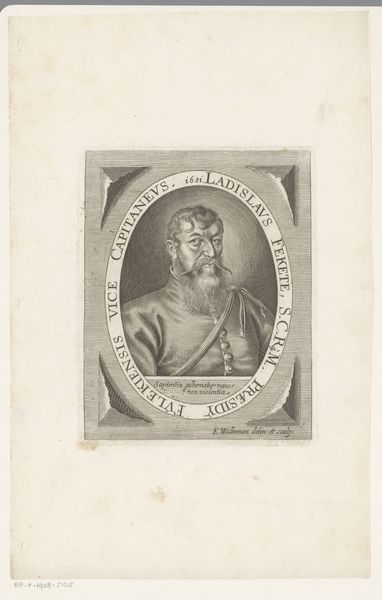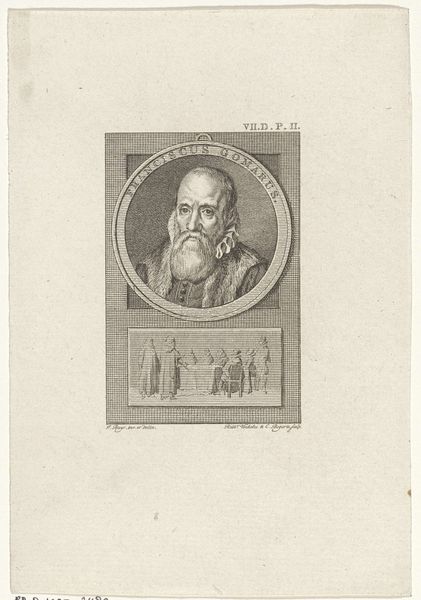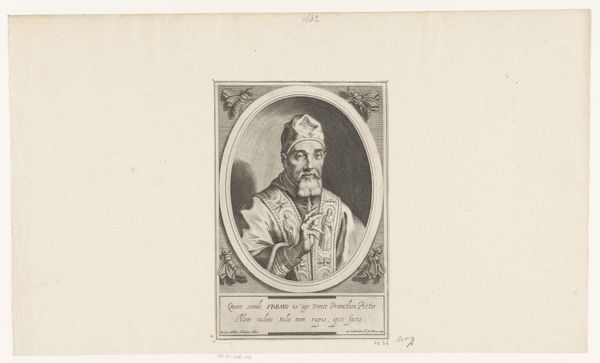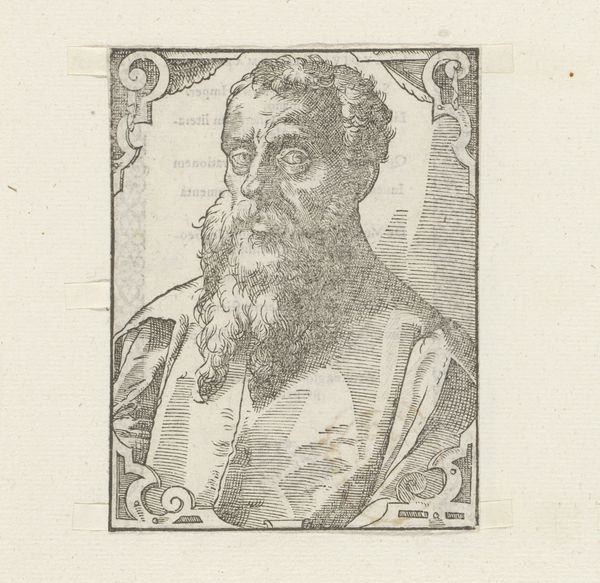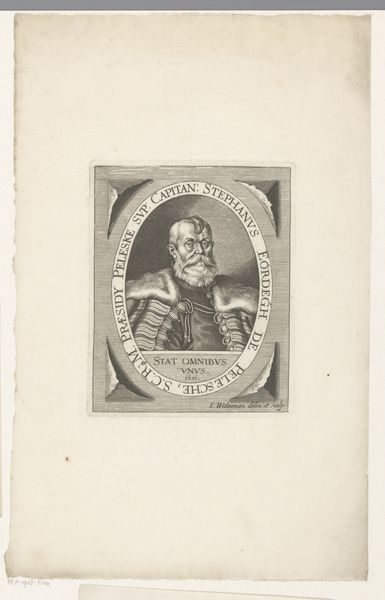
print, engraving
#
portrait
# print
#
11_renaissance
#
history-painting
#
engraving
Dimensions: height 173 mm, width 170 mm
Copyright: Rijks Museum: Open Domain
Curator: Looking at this image, my first thought is the weight of history. You can just feel it bearing down, can't you? Like a somber curtain falling. Editor: Indeed. What we’re observing here is an engraving from between 1586 and 1587 by Frans Hogenberg titled, "Portret van de hertog van Alva" or "Portrait of the Duke of Alba," part of the Rijksmuseum collection. Alba, that notorious figure from the Dutch Revolt... Curator: Yes, "notorious" is putting it mildly. He had a pretty stern reputation! I mean look at that gaze – intense, unyielding. But there’s something almost…melancholy about it too. He appears a man weighed down by the gravity of decisions he had to make. Whether those decisions were the right ones, or defensible... that's something different, though! Editor: And Hogenberg, quite deliberately I suspect, shows Alba within this tight circular frame, literally encircled by his titles, his power. “Governor” and “Captain General” are pretty bold titles, which just shows how important he was at that time. Notice how the texture created through engraving mimics the weight of fabrics, like the ruff around his neck. The portrait makes this really clear claim about authority. Curator: I also appreciate how this image prompts questions. He isn't idealized. He’s rendered with an almost unflinching realism, down to every crease and line of his face. Is Hogenberg offering a commentary on the man behind the titles? Or just illustrating the history of Alba? Or could it be that he doesn't seek to illustrate but is only creating a product for his clients. After all, artists also need to make ends meet and there are lots of those portraits. Editor: And I think those questions are crucial. Because prints like these circulated widely. They weren't just art, but a crucial way of shaping public perception and constructing political narratives, weren’t they? Hogenberg might simply be presenting Alba as powerful, as stern... or making him a tool to send political messages during the period of the Dutch Revolt. That's the function of such images in their own historical context. Curator: Looking closer... even after all the scholarship... sometimes I forget this was someone’s actual face, marked by worry and responsibility, regardless of his choices in office. That reminds us we carry history’s consequences in our collective memory. And maybe, that’s why he feels "weighty". Editor: Perhaps that somberness and all its implications remain potent today as reminders about the long echoes of choices, power and images combined.
Comments
No comments
Be the first to comment and join the conversation on the ultimate creative platform.
